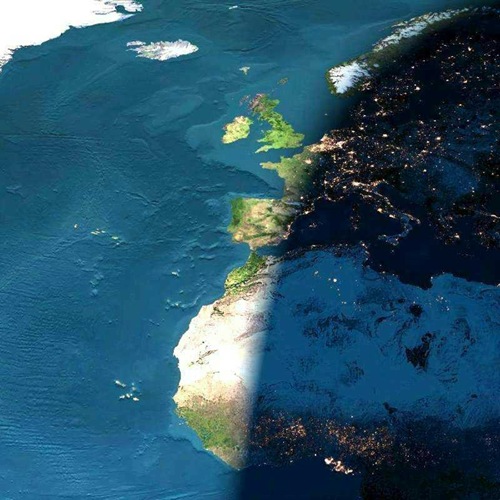Photograph taken from the Space Shuttle Columbia shows sunset over Europe and Africa
This photo is absolutely beautiful. You have to read the text below to have a better understanding of what you are viewing. It is the historic too as this is the last mission for Columbia.
The photograph attached was taken by the crew on board the Columbia during its last mission, on a cloudless day.The picture is of Europe and Africa when the sun is setting.Half of the picture is in night. The bright dots you see are the cities' lights.The top part of Africa is the Sahara Desert .Note that the lights are already on in Holland, Paris, and Barcelona that's it's still daylight in Dublin, London, Lisbon, and Madrid .The sun is still shining on the Strait of Gibraltar. The Mediterranean Sea is already in darkness.In the middle of the Atlantic Ocean you can see the Azores Islands;below them to the right are the Maderia Islands; A bit below are the Canary Islands; and further South, close to the farthest western point of Africa, are the Cape Verda Islands. Note that the Sahara is huge and can be seen clearly both during day time and night time.
To the left, on top, is Greenland, totally frozen.
Source:
The contradictory explanations of this photograph's origins given in the accompanying text are the first clue that something's amiss here: this image can't have been both "taken by the crew on board the Columbia" and "taken via satellite." Actually, the notation about this image's having been "taken by the crew on board the Columbia during its last mission" was added only after the fatal break-up of the Space Shuttle Columbia upon its re-entry on 1 February 2003. Well before then, this picture had been circulating as a photograph "taken via satellite, on a cloudless day."

No comments:
Post a Comment